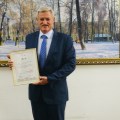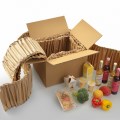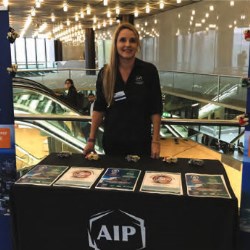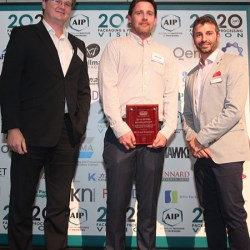If this is your company, CONTACT US to activate Packbase™ software to build your portal.
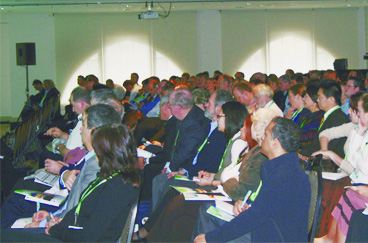

"But if you can’t measure it you can't manage it", was one of the messages relayed at the September meeting of Australian Institute of Packaging in Melbourne, when National Sales and Marketing Managers Michael Dossor of Result Packaging Pty Ltd and Stephen Mummery of Matthews Australasia presented.
Both Result Packaging Pty Ltd and Matthews Australasia are stalwarts of the Institute having sponsored our recent conference and many other events in the past. The gratuitous giving of their time by the presenters should not go unnoticed either.
Michael Dossor and his assistant Madeline and a basket of sample packages led us to a magnificent result. The address was about the company's developments in flexible packaging sealing technologies. The particular emphasis was on easy opening and resealing to protect the contents of the package and continue the ability through its life cycle as a consumer package.
Mr Dossor said that the company culture is based on their packaging technologies doing something sexy. There was not one overt or covert sexy connation but at the end of the evening most would have had a comfortable satisfied feeling, and those who had them may have lit a cigarette.
Result Packaging technologists work with the packaging industry, brand owners, original equipment manufactures (OEM) and within its own research and development arena to produce easy open but resealable packages into the marketing channels. The package must not only protect the contents but influence the buying decision. The main driver to improve packages comes from customer complaints that lead to the modern phenomenon wrap rage.
These complaints can be personal or product related. A consumer taking a knife to open a package and damaging a hand or a degrading the contents (squashing a portion of soft cheese was an example) lead to open direct customer complaints or indirect action by leaving the product on the shelf. Easy open and resealable packages reduce and control waste and reduce the age old problem of finding a lid that fits a home storage container, and also caters for the human lifecycle allowing both children and aged persons to enjoy life.
The interesting aspect of the evening was when Michael addressed the misconceptions arising about easy open and resealable packs. Some were:
- It will add excessive cost to my product
- It's going to slow down production
- I will need new capital equipment
- It's complicated for operators
- It will confuse or frustrate the consumer
- It's not suited to my pack contents
- I will need to change my packaging materials
- If I do it, it's expensive capital equipment
- It's not approved for food contact
- The materials are expensive and not readily available
Each in their turn was debunked leading to the overall "catch cry" if it is done properly it will work. It was claimed that the added cost of a package can be as low as a quarter of a cent and the capex around $15,000 based on studies of successful transfer of applications.
The technical aspects of the application included a phrase, finger lift adhesive killed section which is a nice way to say there is space at the end of the peelable label that is not sticky and obviates the place where the consumer commences the opening. Opening is the start but resealing and continuous reopening is the critical mass. Mr Dossor reminded us that wetness and adhesive are not great bedfellows but manufactures of wet wipes have confidence that the one hundred and twentieth wipe removed will be as serviceable as the first.
Sample packs were passed around the audience and gave members an opportunity to test the information and retrieve the edible contents. Bend Seal is a new application for powders, grains, frozen or chilled products that need the special attention that this technology gives as it positively reseals the pack and sifting or the like is eradicated.
The manners in which existing machinery can be retrofitted by Result were covered in much detail as were the various types of seal and peel and reseal technologies. Save to say sufficient evidence was given to reinforce the company statement that it is enhancing consumer engagement and Result Packaging will result if you contact Result.
Stephen Mummery did not claim that Matthews is doing something sexy but did use an analogy of misunderstanding between husbands and wives. This short example explained that communication is necessary to ensure that the correct outturn is achieved.
Overall Equipment Efficiency or OEE and Lean manufacturing were the thrust of Stephen's presentation. At the outset, he said, "OEE means different things to many people". He explained that OEE is measured by the relation between availability, performance and quality. An OEE score of 100% represents perfect production — that is, manufacturing only good parts, as fast as possible, with no down time.
Stephen said manufacturing companies are finding it hard to remain profitable. A big contributor is the inability to measure their inputs, and thus they lose the ability to manage. He referred to Terry O'Brien of Simplot, the keynote speaker at the recent AIP conference, who stated, "Improve productivity and efficiency or perish.".
Stephen said the quality aspect is often the hardest to measure, because each company has a different view; for example, when rejects are re-run, are they considered as good parts or bad parts? Machine vision inspection technology, which automates quality assurance, helps in the measurement.
Stephen further explained that OEE is a global best practice measure to monitor and improve the effectiveness of manufacturing processes. Lean practices focus on reducing non-value-adding waste in manufacturing, such as waiting time, overproduction, need to rework and motion times in production. He described the benchmarks for greater effectiveness, which are:
- 100% is perfect production, manufacturing only good parts, as fast as possible, with no down time.
- 85% is considered world class for many manufacturers and is a suitable long-term goal.
- 60% is fairly typical for many manufacturers, but indicates there is substantial room for improvement.
- 40% is not at all uncommon for manufacturing companies that are just starting to track and improve their manufacturing performance.
In most cases, a low score and can be easily improved through continuous process improvement and waste reduction.
Companies often begin applying OEE by doing an overall audit of their whole manufacturing process, as a number of variables are likely to be contributing to the inefficiencies. For example, on the production floor, the problems could be operator training leading to coding errors and the need to rework, wastage or excessive recalls due to poor quality control processes and lack of automation. But the production office is not adverse to inefficiencies either due to the lack of real-time visibility and reporting.
Stephen showed some of Matthews' software solutions, with images of operations where intelligent identification systems have been installed. These included camera and computer technologies providing automatic inspection, process control and robot guidance in manufacturing and industrial applications.
He also described the concept of using live scoreboards throughout the factory as being a great efficiency improver, because they show everyone — operators and managers alike — exactly how production is going in real time and historically.
As said earlier, Stephen addressed the topic of Lean manufacturing being linked to OEE and the focus on reducing non-value-adding waste in manufacturing. At question time, John McBride assisted by relating some of his experiences here and overseas. He explained the SAB-Miller who recently took over Fosters is on a global purchasing spree as they identify companies that are fat or even obese in manufacturing processes. It was said that Australia is thirty years behind South Africa in lean manufacturing applications.
It is hoped that those who attended the most informative session are today measuring every part of production to the nth degree for size does matter.


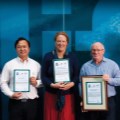
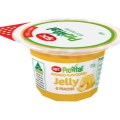
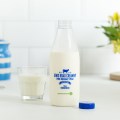
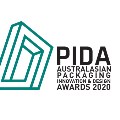
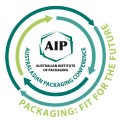
.jpg)



